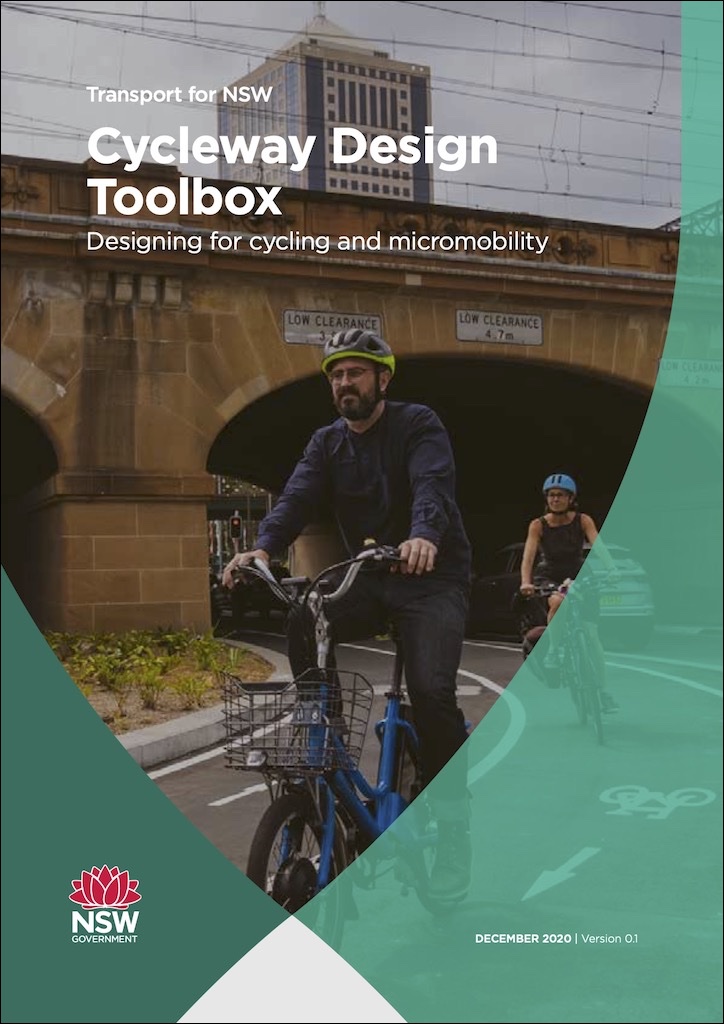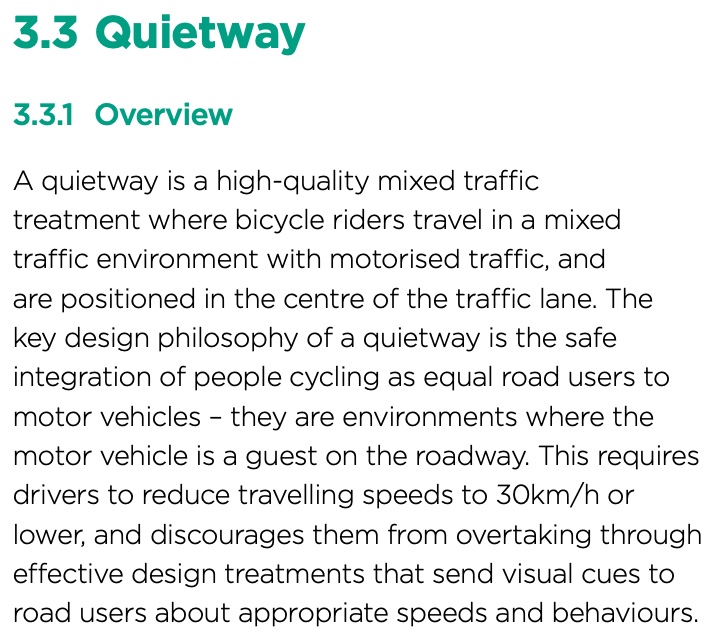Transport for NSW has released a Cycleway Design Toolbox, leading Victoria’s Department of Transport in supporting:
- people of all ages and abilities
- micromobility of various types
- 3.0 metre wide bicycle lanes
- 30 km/h streets

The toolbox focuses on designing for people of all ages and abilities, on various types of micromobility:

To deliver this, the toolbox identifies six design principles, based on best practice from the Netherlands:

The toolbox identifies several design strategies, pointing out that designing for cycling infrastructure is therefore both a transport planning task and an urban design task. Strategies include reallocating space, reducing traffic flow, reducing traffic speed in general, and reducing traffic speed to 30 km/h.

The toolbox points out that cycling should be designed with enough width to allow for safe recovery and overtaking, catering for future growth in ridership, and accommodating riders of all ages and abilities. Further, that sufficiently wide cycling paths allow people to ride side-by- side (such as parents and children) and cater for the emergence of innovative forms of micromobility. The toolbox recommends a width of 3.0 metres.

For quieter local streets, the toolbox recommends “quietways” where people on bicycles share the lane with people driving, and the speed is reduced to 30 km/h. Key design elements include narrower lanes, modal filters and differing pavement texture.


Our view
Street Alive Yarra applauds Transport for NSW for releasing a design toolbox that incorporates many best practice elements. We urge the Victorian Department of Transport to do the same, and explicitly support:
- people of all ages and abilities
- micromobility of various types
- 3.0 metre wide bicycle lanes
- 30 km/h streets
Published 17th February 2021
